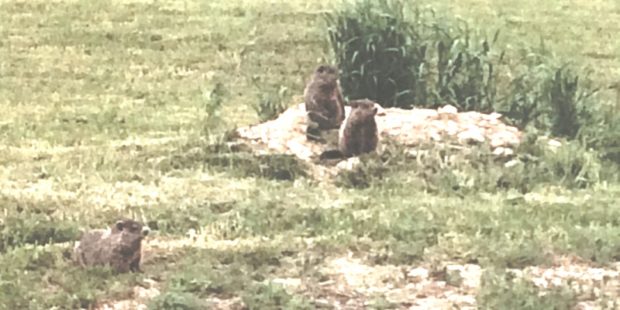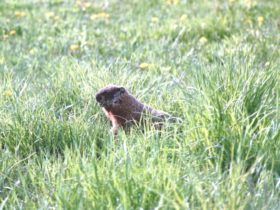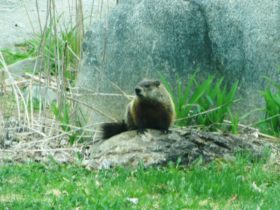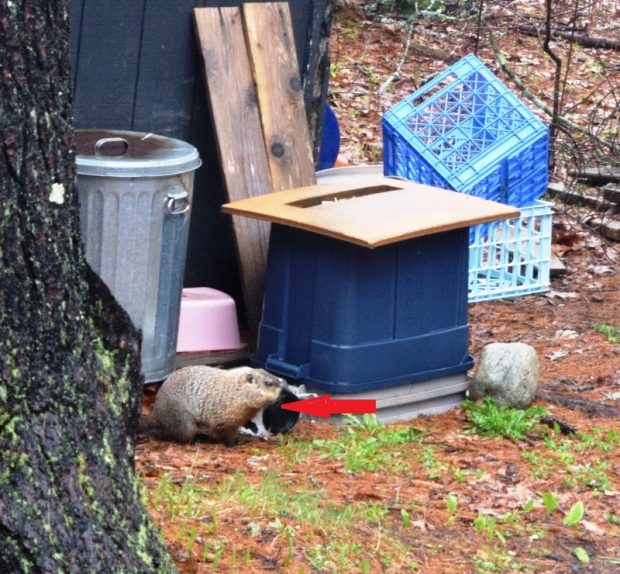These cute large rodents (thus a mammal) are entertaining to look at, but potentially dangerous and disruptive. A member of the squirrel family, it is also known as the “ground hog” or whistle pig. According to Scientific American,
Groundhogs are also variously referred to as woodchucks, whistle-pigs, or land-beavers. The name whistle-pig comes from the fact that, when alarmed, a groundhog will emit a high-pitched whistle as a warning to the rest of his or her colony. The name woodchuck has nothing to do with wood. Or chucking. It is derived from the Algonquian (Native American) name for the critters, wuchak.
Woodchucks prefer open farmland and wooded or brushy areas near open land where their burrows are usually located. The burrows are noticeable by a large mound of excavated earth at the entrances. They often have two or more entrances some distance from the the main entrance. Overgrown entrances can be dangerous with the potential for braking legs of horses and humans. Woodchucks also find gardens a fine supermarket to visit.
Additional resources
Bollengier, Rene M. Jr. “WOODCHUCKS and THEIR CONTROL.” Internet Center for Wildlife Damage Management. 2005. http://icwdm.org/handbook/rodents/woodchucks.asp (accessed June 19, 2017)
Goldman, Jason G. “7 Things You Didn’t Know About Groundhogs.” Scientific American. February 2, 2012. https://blogs.scientificamerican.com/thoughtful-animal/7-things-you-didnt-know-about-groundhogs/ (accessed June 19, 2017)





